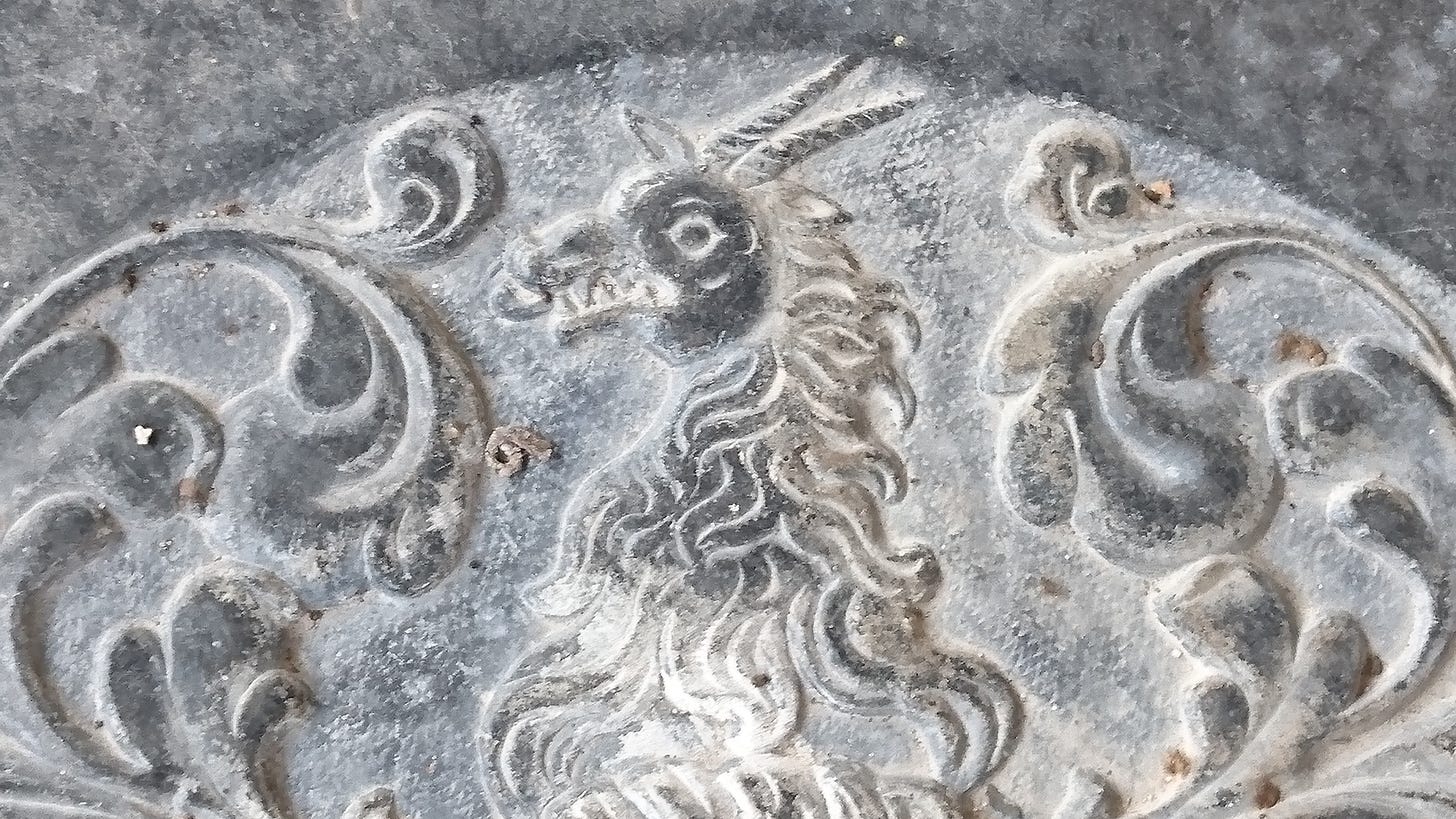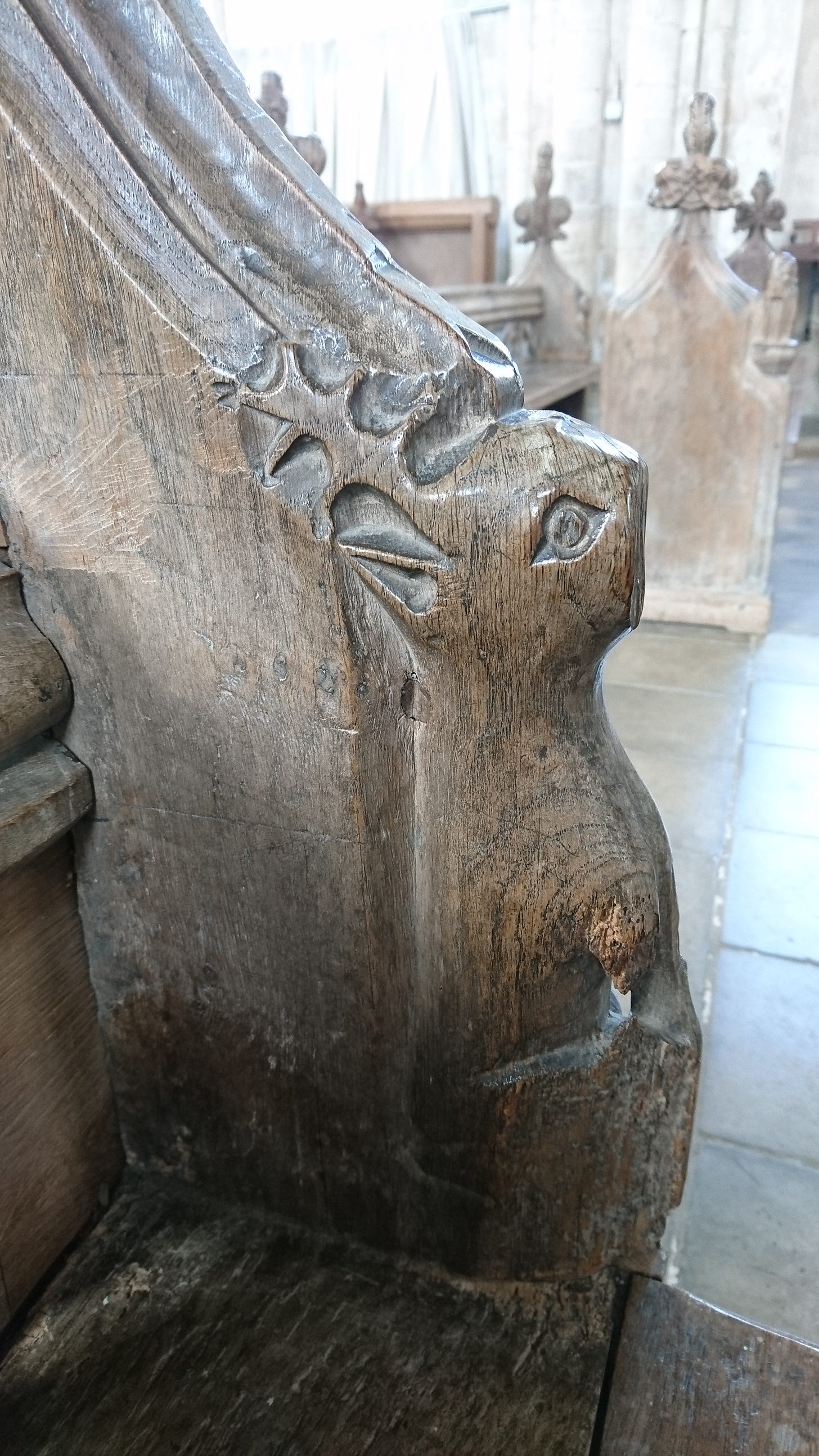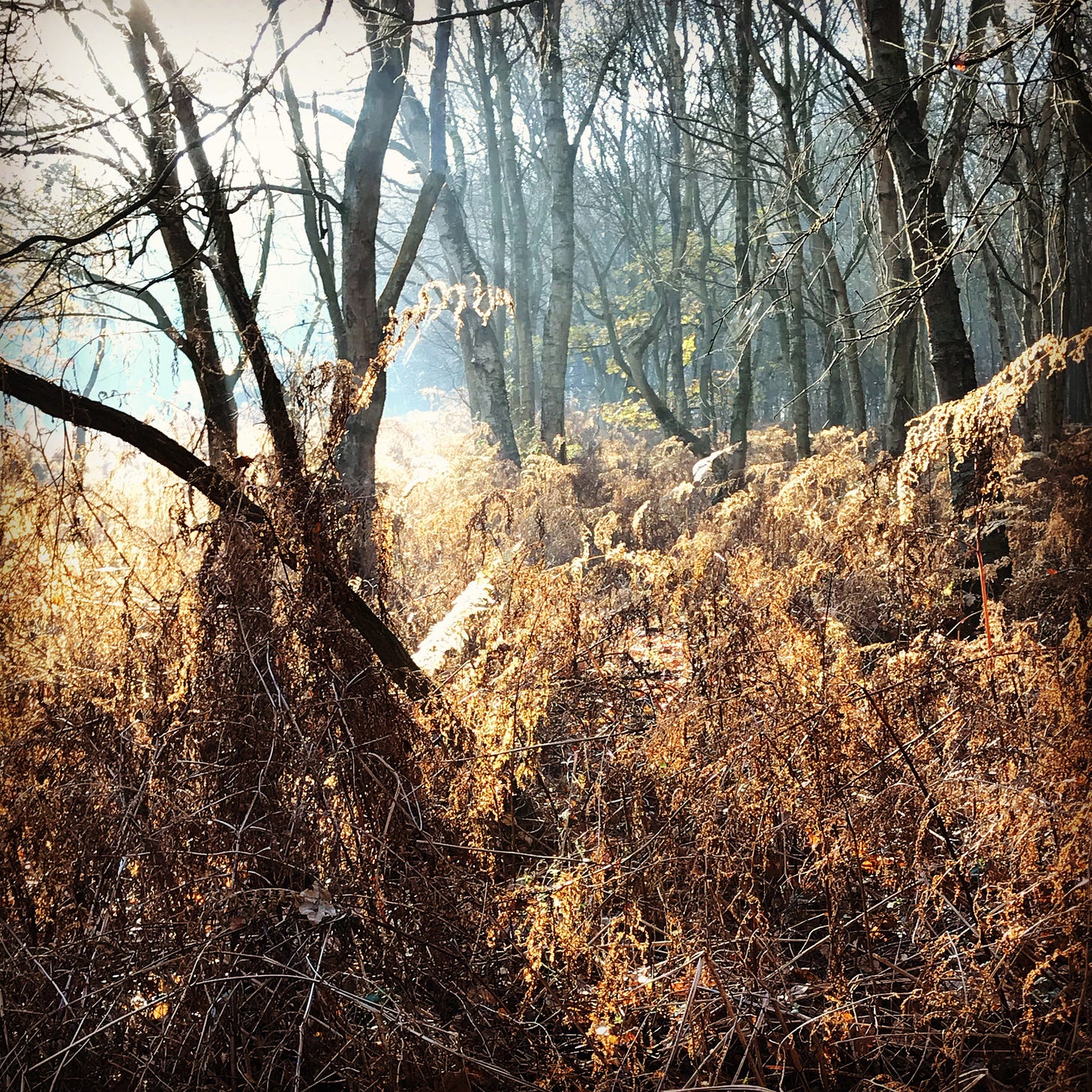Happy January Full Moon, and of course Happy New Year!
Not to mention Old Christmas Eve and Old Christmas Day (6 / 7 January), Epiphany or Twelfth Night (6 January), and Distaff Day (7 January - the day that women went back to their spinning but actually spent the day having fun and enjoying cakes and ale!).
Old Christmas Eve performance and long-exposure photography,
Wood Dalling St Andrew’s church , 6 January 2008
I have many amazing memories of my year long artist’s residency in a little-visited Norfolk church, but this one - Old Christmas Eve - stands out as especially magical.
Festial was structured around the Julian Calendar dates of some of the most important festivals of the medieval year, when I would spend time in the church, usually alone, to explore the limits of how far I could share in, empathise with and ‘inhabit’ the medieval world. During each visit I would undertake seasonal activities inspired not only by the rituals appropriate to that medieval festival, but by myth, folklore and my own inner worlds.
That Old Christmas Eve, the keyholder gave me permission to stay inside the ancient church for as long as I wanted, just posting the key back through his letterbox before going home. These days ‘champing’ - organised camping within certain churches - is a thing, but then it was much more usual to find that a church had been assiduously locked if you arrived after about 4pm.
So it was that I moved candles around in the nave, not knowing exactly what would be captured by the opened shutter.
And, I wrote, stream of consciousness style, as the hours ticked by.
The storm gathers, the wind whips up, banging and flapping on every side. Creak, bang, flap, thump, creak, bang, flap, thump.
Moving the candles around. Suddenly a river flickers and shimmers down the centre of the nave.
… focus absolutely; complete stillness; we hold our breath. It’s incredibly noisy. More flapping and banging. Thud. A pigeon stirs. The candles flicker. Utter concentration.
… we freeze, totally aware of ourselves in the moment. We don’t know what the time is. Surely we’ve only been working here for a few minutes?
The storm grows wilder; maybe the roof timbers are rocking and shivering. An upended ship. The candle flames are steady though … as we remain fixed in the moment, knowing that if we move a muscle …
Although we can’t see any of these by the light of our tiny candle flames, they are there … their presence is felt … perhaps they will show us something of their nature tonight of all nights.
We can’t see the strange ones but they can see us and they have seen it all before.
(from my notebook, 6 January 2008)
Memorial slab, Wood Dalling church
Have you done the sort of things that pagans did and still do on the first of January, going about as a little stag or a calf? If you have done so, you should do penance for seven days on bread and water.
From ‘Medieval Popular Religion 1000-1500’, ed. John Shinners
‘Now, my child; how many times have I told you not to go about as a little human being at New Year?’
Wolf Moon
January’s full moon is often called the Wolf Moon, perhaps named for hungry wolves howling across the wintry land. Unlike other full moon names it's thought have a Celtic and Old English origin, and to have been taken to North America by European settlers. Most of the other full moon names we commonly see are English interpretations of Native American ones, although Celtic, Anglo-Saxon, medieval and Chinese names are sometimes seen too. Among them, for January, are Quiet Moon, Moon After Yule, Stay Home Moon, Severe Moon, Birch Moon, Cold Moon and Hard Moon.
Would you choose one of these? Or would you prefer one inspired by the land where you live or the feeling that each month evokes for you? Looking around me here at The Old Shop I think I’d have something like Pink Bark Moon or Horseshoe Moon. At this time of year the low sunrises and sunsets imbue the birches on the heath with a magical rose-pearl gleam, while tracks imprinted in the mud show where riders have trotted out on the scoured and flattened earth.
Caramelised Banana and Walnut Porridge
If you’re setting out with staff, backpack and boots and there’s frost in the hedgerow and a long walk ahead, a warming breakfast beforehand feels like the way to go. With coffee, of course 😉.
Here is the one I made this morning. It’s loosely based on a Deliciously Ella recipe, with a few Old Shop tweaks (aka I didn’t have all the original ingredients to hand but it worked anyway 😂).
It needs a tiny bit of prep but the rest is very quick. In a frying pan, toast a few chopped walnuts (or almonds, or hazelnuts). Put to one side. Melt a little coconut oil in the pan, slice a ripe banana in half lengthways and fry the two long slices until caramelised. Mash one of these with a fork and put the other aside for the top.
Now make porridge as you normally would - I used a couple of handfuls of porridge oats with a mixture of almond milk and water but any flaked grain and any milk is fine. Before I have used flaked buckwheat which is lovely.
Spice with plenty of cinnamon and add in a tbsp of nut butter. Today I used peanut butter but cashew or almond are good. Tip in the mashed banana.
Spoon into a bowl, place the reserved caramelised banana on top, drizzle with more nut butter if wished and sprinkle with cinnamon and the toasted walnuts.
As a wonky vegan I could also have drizzled with honey. As I didn’t have any, I became an accidental vegan and used a little maple syrup but this is optional.
Now I feel thoroughly warmed and raring to go.
If you try this, I’d love to hear what you think!
Twelfth Night
Brittle bracken bones in Crow Wood
Twelfth Night. For some reason these words have always felt starlit and magical to me. Maybe it goes back to something I read as a little girl. A storybook mentioned one of the impressive nativity scenes that French families often had in their homes, peopled by small figures called santons. Each day the Three Wise Men and their camels were moved a little closer to the stable and its star until they finally arrived, bearing their glittering treasures, on Twelfth Night. Even without anything as exotic as camels the heath felt magical as the January sun lowered through the birch branches on my walk yesterday. Underfoot, brittle bracken bones lay pale, scattered and imprinted on a soft bed of leaves.
Epiphany
A cold coming we had of it,
Just the worst time of the year
For a journey, and such a long journey:
The ways deep and the weather sharp,
The very dead of winter.
And the camels galled, sorefooted, refractory,
Lying down in the melting snow.
There were times we regretted
The summer palaces on slopes, the terraces,
And the silken girls bringing sherbet.
Then the camel men cursing and grumbling
and running away, and wanting their liquor and women,
And the night-fires going out, and the lack of shelters,
And the cities hostile and the towns unfriendly
And the villages dirty and charging high prices:
A hard time we had of it.
At the end we preferred to travel all night,
Sleeping in snatches,
With the voices singing in our ears, saying
That this was all folly.
T S Eliot, from Journey of the Magi
I love the word Epiphany almost as much as Twelfth Night. It even feels lovely when you say it!
I recently discovered that while in the Western Christian church Epiphany commemorates the arrival of the Three Wise Men at the stable, in the Eastern Orthodox tradition it celebrates the baptism of Christ. In the Czech Republic, Bulgaria, Greece and Russia, people swim in ice-cold water on this day. Perhaps rituals like the Christmas Day or Boxing Day Swim (of which there are quite a few around the Norfolk coast ….) are an unwitting echo of this?
In Portugal, 6 January is known as as Dia de Reis. There, and in Spain too, it’s the Three Wise Men who bring gifts to children rather than Father Christmas. On the evening of 5 January, children leave shoes by windows with straw and carrots for the horses of the Magi and in return, cakes and sweets are left for the children.
Leading up to this, between New Year’s Day and Epiphany, Cantares dos Reis (Songs of the Kings) are sung. These are traditional New Year carols that have been passed down for generations.
The festival is like Twelfth Night in that afterwards the decorations are taken down, but first there is Bolo de Reis (King Cake) to be enjoyed. Also known as a Three Kings Cake, it’s usually baked in a ring shaped tin. The actual ingredients are variable, but in most cases a figurine of the Christ child is hidden inside. Whoever finds it, wins a prize.
It’s not unlike the old English tradition of baking a Twelfth Night cake, which contained a dried pea in one half and a bean in the other. The women were served slices from the left hand side, the men from the right, and the finders of the ‘treasure’ were crowned Queen Pea and King Bean for the evening festivities. Clearly related to the boisterous Lord of Misrule/Feast of Fools customs and general topsy-turvy merriment, I can’t help thinking we’re missing out these days!
Mermaid’s Head
Book cover, ‘Nothing Said’ by Lucy Boston
Merfolk are important to the magic of most places with an abundance of water, and Norfolk is no exception. Every mere in the Brecks, every stretch of Broadland’s waterways and all along our long coastline there are Mermaids or Mermen to be found. However, they are mostly shy, sensitive beings …
Val Thomas, ‘Of Chalk and Flint: a Way of Norfolk Magic’
Where would you look for a mermaid?
Despite its wateriness, Norfolk is not well endowed with holy wells or springs. Scanning a map will reveal only a handful in the whole county. But early Christian warnings about eating or drinking with the spirits or ancestors at trees, wells and springs suggest that a named landscape feature could indicate a site that has been special for hundreds, if not thousands, of years.
As soon as I saw the named spring Mermaid’s Head on the local OS map I was desperate to go and find it - and it was only a few miles away!
So, one sunny New Year’s Eve, we set off on bikes along the old railway track with our trusty flask. Once we had left the track for foot and bridle paths, the going became much rougher and a tiny bit of trespassing may have been involved. Eventually we reached the edge of the wood where, according to the map, we would find the Mermaid’s Head, source of the Mermaid River. And, pushing through the brambles, we did. There was no mistaking it.
What we saw was a small pool between the trees, cloudy where mud had been disturbed by the gentle bubbling of the spring. With a clear blue sky sending reflections dancing across the pool it was a truly magical place where you half expected to witness the deft flick of a tail or to glimpse trailing strands of weedy hair.
In The Devil’s Plantation, Nigel G Pearson tells us that Norfolk mermaids inhabit rivers and pools as much as the sea, their name deriving from mere-maid or mere-wif. Although in folklore they are wily beings, always ready to drag the unwary into their watery habitation, Nigel speculates that they may actually be a distant memory of revered water spirits.
And, I whispered to myself as I opened the coffee-flask beside the spring, maybe not such a distant memory …
In Search of the Spring
2 January 2023
Tracks, tunnels, scrapes.
A clue of strewn honeycomb, weather-blackened.
Flattened reeds
pick up the gentle trickle
tangle and flutter
flick of wings.
Flags ripple
spear the eye, spear the clutching hand.
We hold our breath for the beauty
of each spring’s gold
and wild garlic and watermint
crushed to a crescendo.
(from ‘Blackwater’)
It was not the first time I’d tried to pinpoint the source of the Hundred Stream. Ever since discovering that this long, named stream that flows into Norfolk’s only canal, then into the River Ant, through Barton Broad, joins the River Bure, and then the River Yare and spills into the sea at Great Yarmouth has its beginning very close to my cottage, I have wanted to find the place where it first leaves the earth.
If you asked me why this matters, I’d be hard pushed to tell you, except that it’s a feeling I have. Partly, I suppose, it’s the knowledge that our ancestors revered water and it seems from the precious objects that they deliberately deposited close to springs and natural wells that they were very well aware of the significance of that first tiny trickle and its indwelling spirits.
In Alan Garner’s 1973 novel ‘Red Shift’, a polished grey-green stone axe is the central ‘character’ in the story, linking all the people through the ages whose hands it passes through. As the author explains (Edmonds and Garner, 2016) the axe really exists. It’s an archaeological artefact of the late Neolithic/early Bronze Age, found close to his Cheshire home near a spring at Adders Moss, Over Alderley.
Another factor is memory. I remember the excitement my husband and I felt when we stumbled upon the source of the River Stiffkey in a widened ditch next to a bird watchers’ car park. We had actually gone there in the hope of spotting red kites and honey buzzards, but after brewing up over our little camping stove and spreading out the map we realised that the newborn river lay just beyond the hedge. Another time, we stopped the car by a tiny bridge and hung over it, gazing at the thin dark ribbon between high banks that would grow from this tiny gurgling infant to become the mighty ship-carrying River Wensum.
We even structured a guided walk to circle around the source of the Blackwater, close to where we lived. We invited participants to gather by the close-clipped banks of the stream, much altered by farming practice to make it run deep and straight. In prehistory we would probably have been standing in alder carr with tall reeds, willows and little rivulets running this way and that along the valley bottom, swelling and shrinking according to rainfall and season but never following one single course. Imagine the wildlife that such a habitat would nurture and what a rich food source it would provide!
I had written a sort-of poem which I read, while my husband gently drummed in the background. It was one of those moments that you know even at the time will stay with you. A shared moment when - for no longer than the flicker between two alder twigs - we all became prehistoric.
I look for, and find, beauty where I live, here between the heath and the sea. But the truth is that there’s a workaday quality to the landscape. Farming practices, here as elsewhere in Norfolk, place practicality above all else. Seeking a romantic spring rising from a mossy well, you will instead find field-edge drainage channels, ditches and culverts which confuse things and make it very hard to be certain that you’re in the right place at all.
And that’s why this was my third attempt to find the spot where the Hundred Stream rises (itself a beautiful image to contemplate). I knew from our old paper map and the GPS on my phone that I had been close before, but something had whispered that it wasn’t quite right. Now I had enlarged a digital map and could clearly see that the ‘stream’ - at this point looking identical to a ditch - continued under the Big Road. Before, I had stopped short, believing the end of one of the drainage channels to be the place. Remembering our Mermaid’s Head experience, I saved the expedition for New Year and a gloriously sunny afternoon…
If you’re curious to know what happened, you can see the adventure unfold in this video that I put together on the day:









Imogen, I loved the evocative detail of the surroundings and the rituals! I am always fascinated by the commonalities in various folk traditions and beliefs. Thank you for the beautiful images and poems!
“Spear the eye, spear the clutching hand”....such beauty in your words.